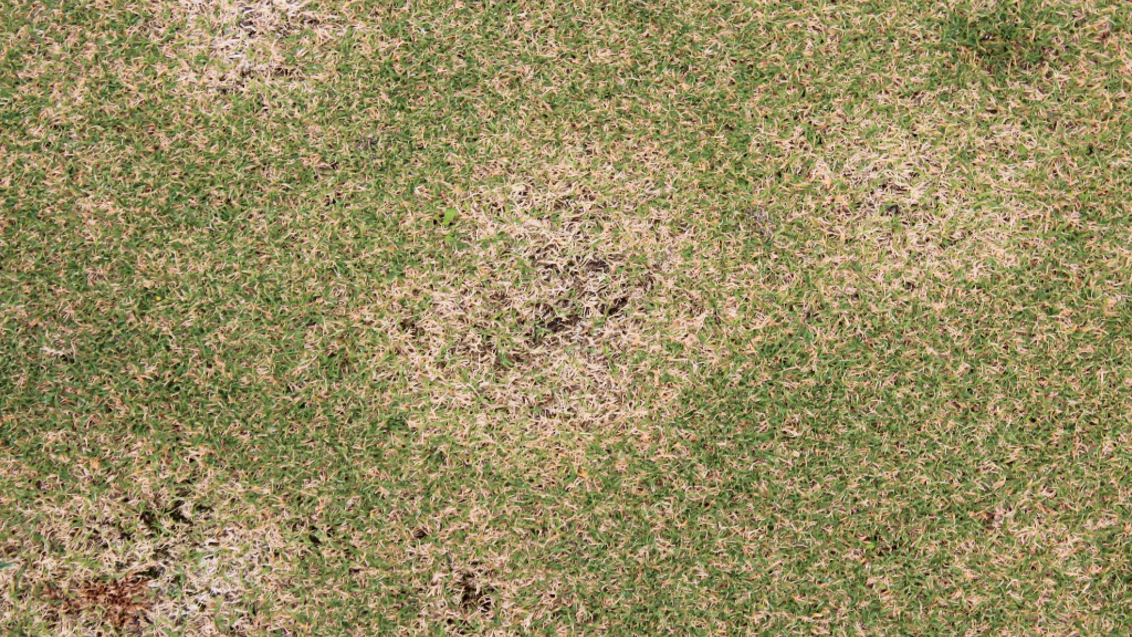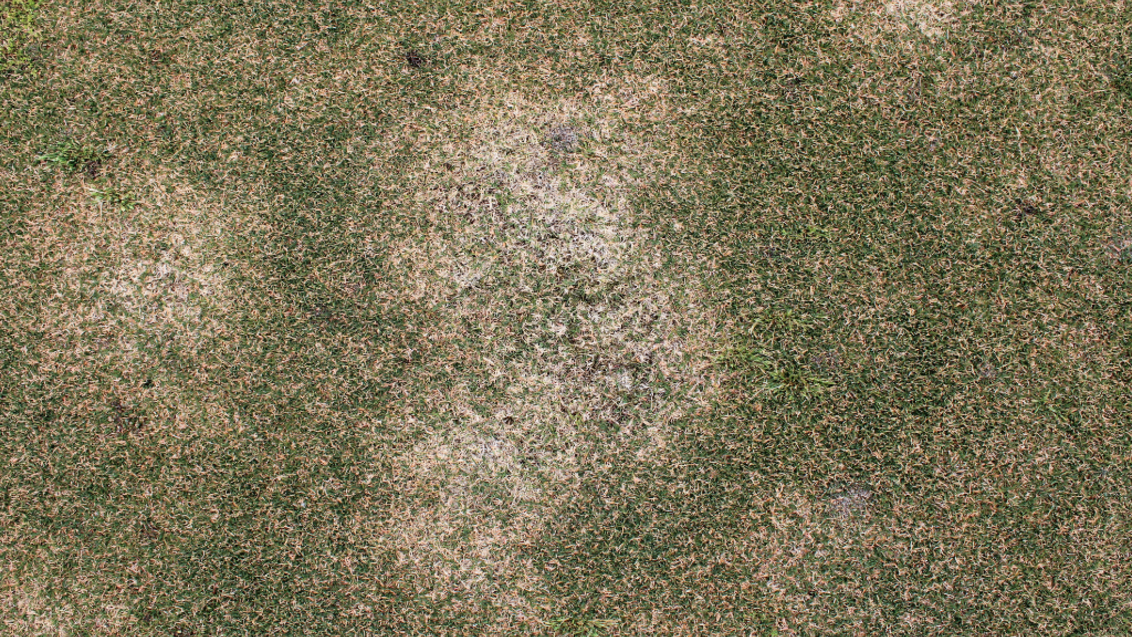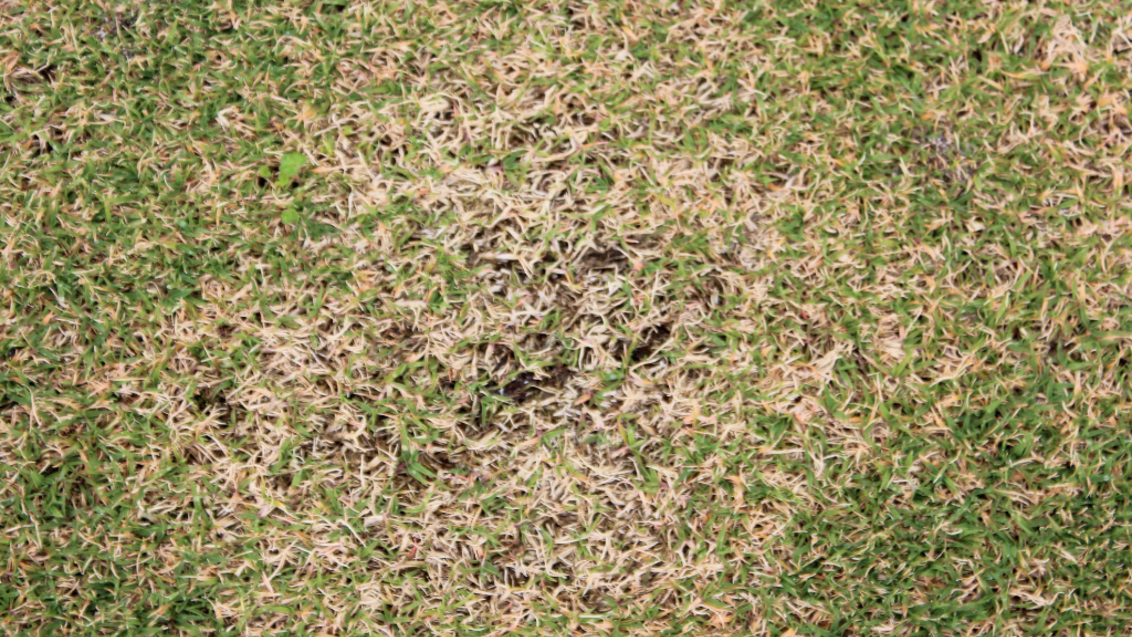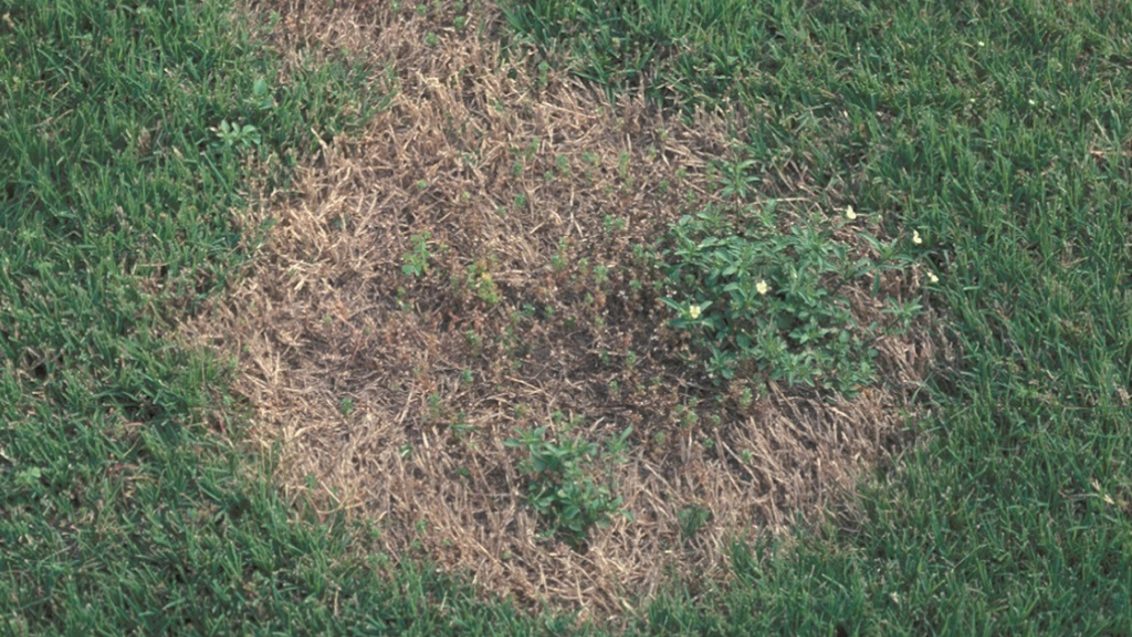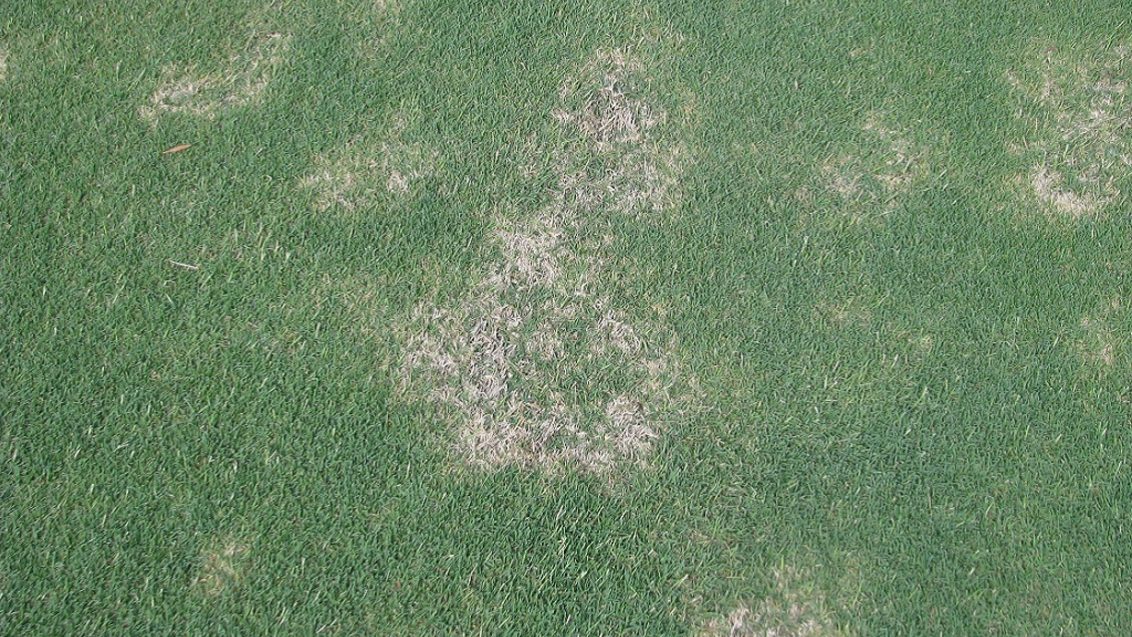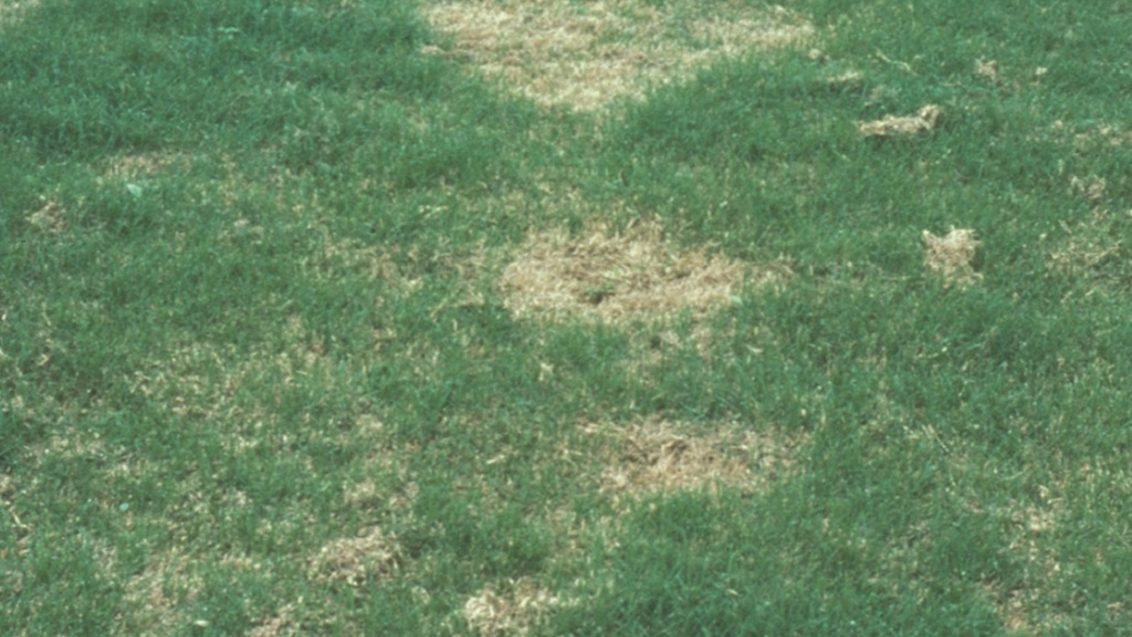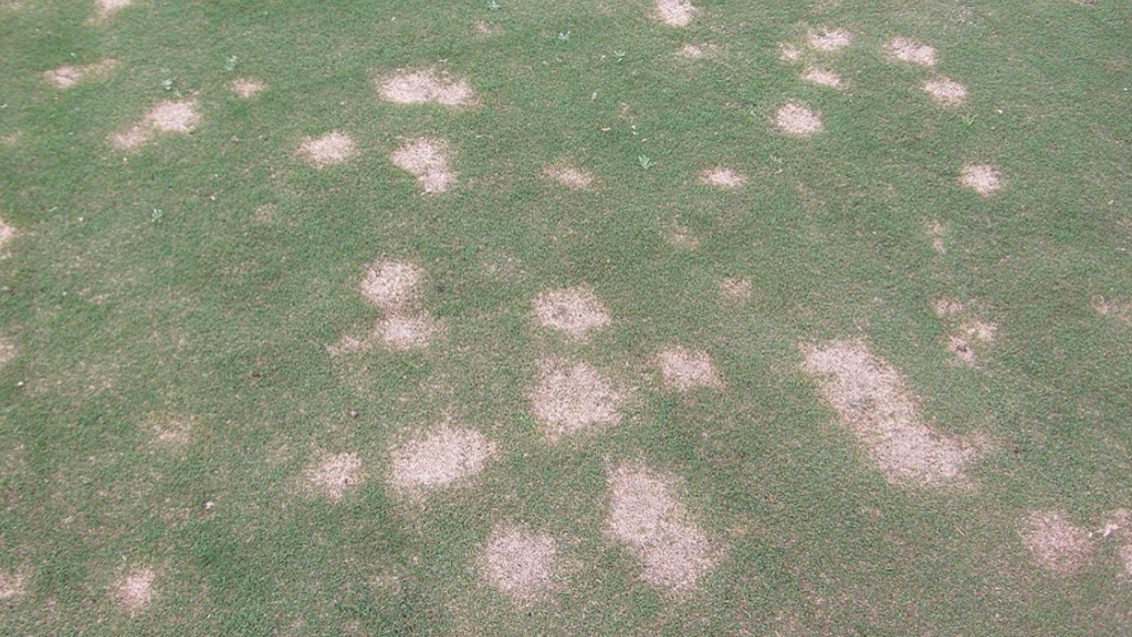Spring Dead Spot
Leptosphaeria korrae
Disease of Roots
Susceptible Turf
Common Couch, South African couch grass and their hybrids
Symptoms
- Circular patches of bleached, straw coloured dead grass appear in spring as the dormant grass regrows.
- Patches are also visible in autumn and winter after a series of unusually cool days or wet, cold weather.
- Patches are a few cm to 1 m in diameter.
- Patches reappear and expand in the same spot for 3 or more years.
- After 2 to 3 years, the centres of active patches may remain alive, and the patch takes on a "ring-like" appearance.
- Roots of affected plants turn dark brown to black and are severely rotted.
- Regrowth of grass into affected patches is slow and patches may remain barren or fill with weeds.
Conditions Favouring Disease
- Most active when temperatures are cool (12°C to 14°C) and soil is moist.
- Roots of Couch grow most rapidly at 24°C to 29°C and extremely slowly at 15°C, thus the fungus has a competitive advantage at low temperatures.
- Spring Dead Spot favours cool, wet weather in the spring and autumn and daily temperatures of less than 15°C.
- This disease is typically found where thatch is more than 1.2 cm thick and in locations with poor drainage and low potassium levels.
- Heavy applications of nitrogen in late summer often increase disease severity the following spring.
- Spring Dead Spot is more severe on turf that is over three-years old and in locations with long dormancy and cold temperatures.
Management Tips
- Preventative systemic fungicide applications during late summer and autumn.
- Good fertiliser management especially nitrogen and potassium.
- Control weeds in affected turf to enhance recovery from Spring Dead Spot.
- Apply moderate to high levels of phosphorous, potash and minor elements.
- Improve drainage of turf and reduce thatch.
General Comments
Spring Dead Spot is typically a disease of mature turf that is intensively managed.

